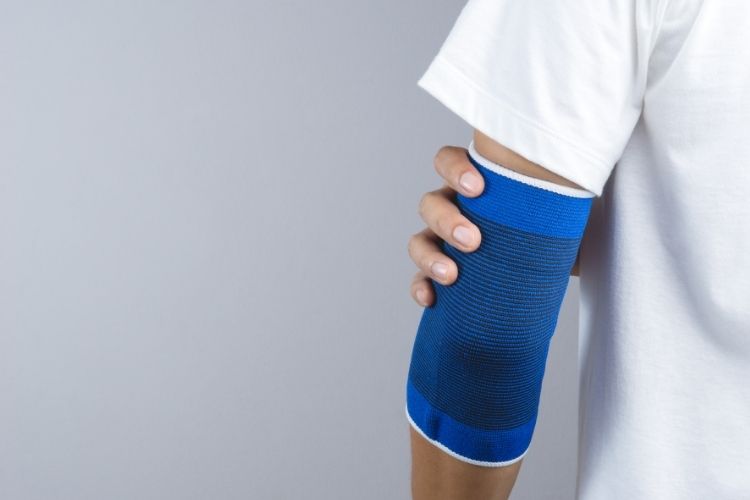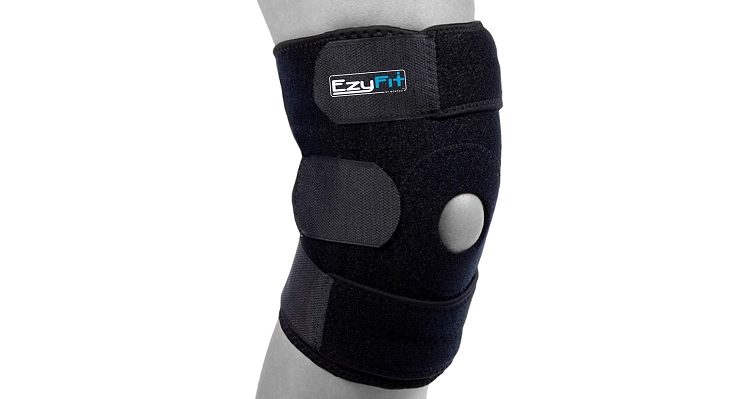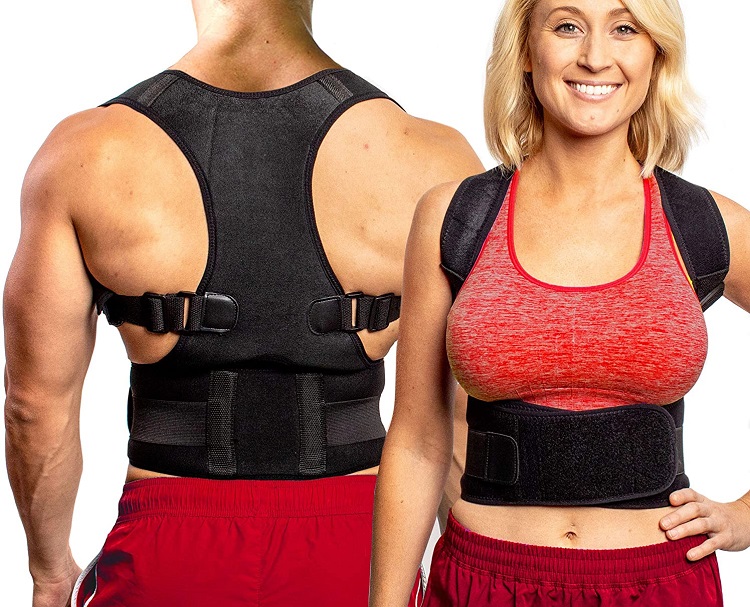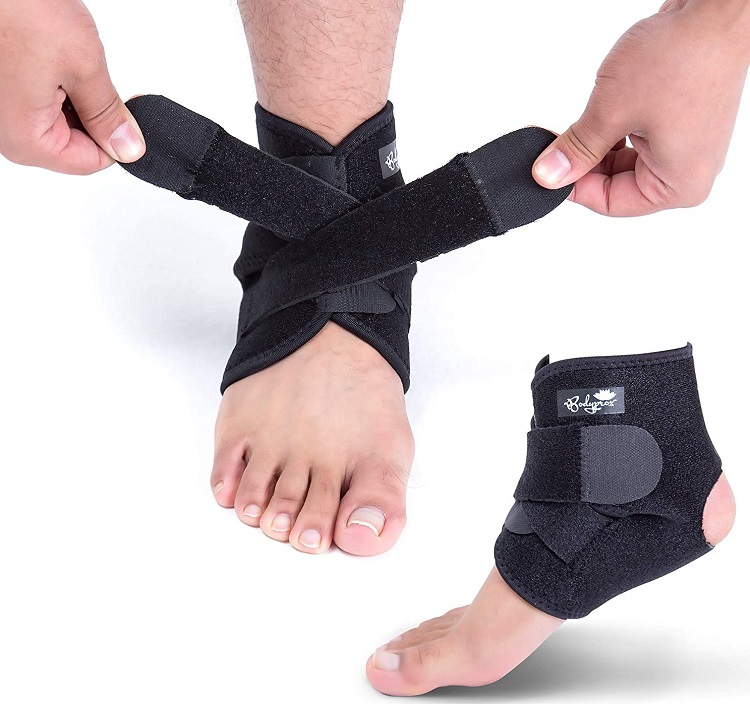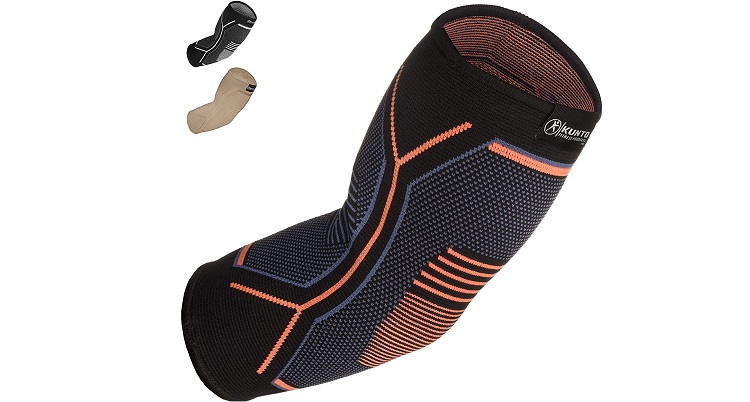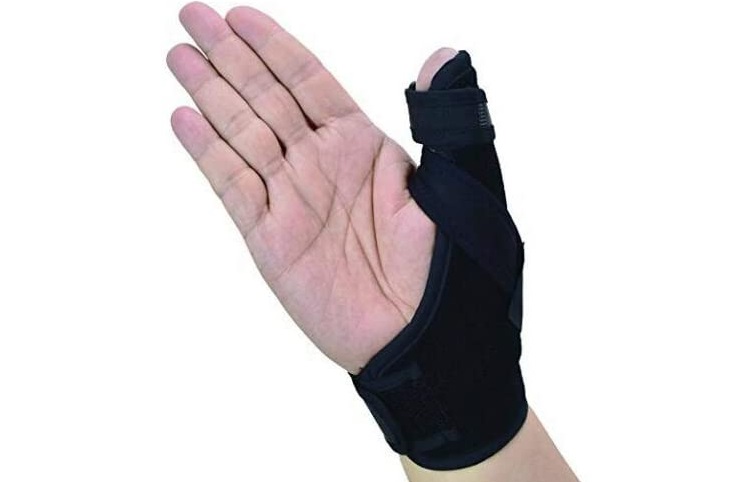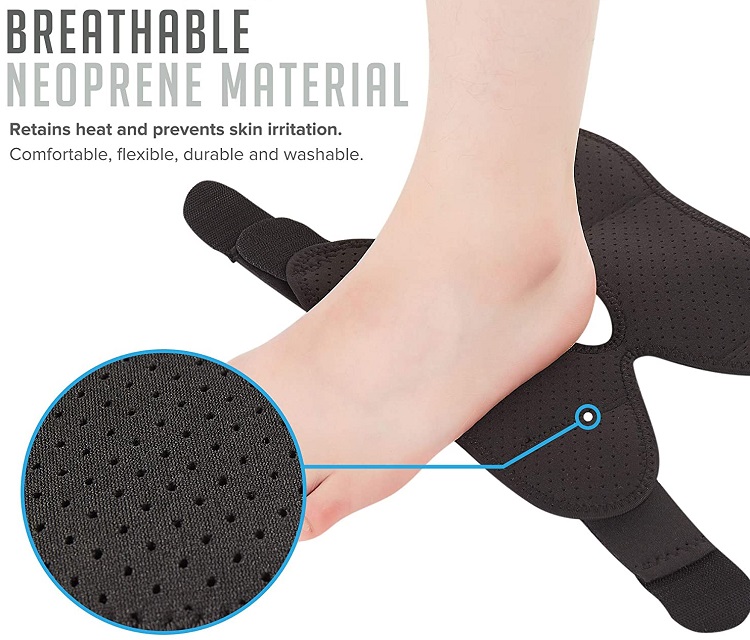- Best Transport Wheelchairs Guide - October 13, 2021
Injuries in sports are common and can happen at any time. According to the National Safety Council, sports and recreational injuries decreased by 27% in 2020. Most athletes suffer at least once during their careers.
They can range from something simple like an ankle sprain to a more serious issue like a fracture. The good thing is that most sports-related injuries can be prevented or reduced using appropriate protective gear or an effective prevention strategy.
Sports medicine braces limit motion and reduce pain in common athletic injuries such as Anterior Cruciate Ligament (ACL) tears, shoulder separations, and ankle sprains. These orthopedic braces offer excellent external support and compression while also impacting the body’s natural healing process.
In this article, we will look at the various types of braces used in sports medicine. We will also discuss the best braces available in the market and what you need to know before buying sports braces.
What is Sports Medicine?
Sports medicine is the application of medical science and technology to prevent, diagnose and treat sports-related injuries. It involves the care, prevention, diagnosis, and treatment of injuries. The term “sports medicine” encompasses all aspects of health care for athletes at all levels.
Physicians use surgical, medical, rehabilitation, nutrition, and physical therapy modalities to assist in the overall well-being and recovery of the athlete. Sports medicine specialists are physicians, orthopedic surgeons, sports doctors, athletic trainers, physiotherapists, chiropractors, and massage therapists.
Types of Sports Medicine Braces
A brace is a support or splint used to limit or prevent movement or protect an injured part of the body. Depending on the type of injury, sports medicine braces support joints or help stabilize muscles or tendons. The primary purpose of wearing any medical brace is to treat your injuries by immobilizing them, which allows them to heal faster.
In addition, they provide comfort and ease while you perform your daily activities. Various types of sports medicine braces can provide relief from the pain caused by these injuries. Let us have a look at some of them.
Rehabilitative Braces
Rehabilitative braces are a necessary temporary form of support following injury or surgery. They provide protection, stability and restrict movement. This is vital in cases where the injured area needs time to heal. Rehabilitative braces help to reduce swelling and allow for a slow return to activity.
Prophylactic Braces
Prophylactic braces work to stop injuries from happening. They are popular among athletes who participate in high-risk sports. If you have a high risk of injury, this type of brace can help reduce your chance of re-injuries.
Functional Braces
Functional braces can be a great tool when recovering from an injury and feel like you need some help. They protect you from getting injured again by restoring the strength to your body parts that are weak or degenerated. You can return to sports and other activities that stress the injured joint or ligament with functional braces.
Functional braces give you increased stability and body awareness as you move. Thus, allowing you to return to sports or activities that would otherwise cause pain.
Examples of Braces Used in Sports Medicine
Braces are the perfect tools to treat or prevent injuries in several different sporting activities. Here are some examples of braces used in sports medicine.
Knee Braces and Supports
Knee braces are supportive devices that help prevent injury or aid in recovery from damage to the knee. They are available in various materials, including cloth, thermoplastic, silicone, metal, and plastic. Knee braces are classified based on their primary function, location of application, and level of support.
Rehabilitative Knee Braces
A person may have to wear a rehabilitative knee brace for a few weeks after sustaining an injury or knee surgery. The brace stabilizes the knee and still allows some movement while it heals.
Functional Knee Braces
The functional knee brace provides support to previously injured knees. Athletes who have recovered from major knee injuries and want to stabilize their knees to prevent another injury use these braces.
Unloader Knee Braces
Knee pain is a common ailment for those with arthritis. When the kneecap moves from its normal position, the muscles supporting it tighten and pull down on it. This can cause a lot of pain and discomfort.
Unloader knee braces take some of the pressure off the painful area of the knee (“unload”). They redistribute weight to a more robust knee area, making walking and doing other activities easy.
Prophylactic Knee Braces
Prophylactic knee braces are worn during contact sports such as football to protect the athletes from injuries. Recently, they have become quite popular among sportspersons, although scientists are yet to prove if they work.
Knee Sleeves
Knee sleeves are an excellent alternative to traditional knee wraps. They are generally lighter, more comfortable, less restricting, and easier to use than the conventional knee bands.
They are available in a variety of sizes and styles to accommodate all levels of athletes. Knee sleeves are a favorite of runners, weightlifters, athletes, and anyone who experiences knee pain.
Elbow Braces and Splints
Elbow splints and braces help treat a variety of elbow conditions and injuries. Elbow braces come in many different forms, but they are all designed to protect the elbow from further damage and aid in healing. Some of the most common elbow braces and splints are;
- Elbow contractures
- Elbow immobilizers
- Elbow sleeves and straps
- Cubital tunnel
- Elbow Post-op and ROM
You can play your favorite sport with an elbow brace to help you continue despite the occasional pain. It is beneficial for sports that require constant action, such as tennis, basketball, and volleyball. A brace is also a vital part of a successful physical therapy process.
Elbow braces are great for people with tennis elbow or golfer’s elbow. Tennis elbow is a condition where the tendons attached to the outside of the elbow are inflamed. It got its name from the sport that most often leads to it, tennis.
A golfer’s elbow is when the tendons attached to the inside of the elbow are inflamed. Also named after the sport that most often leads to it, golf. Other conditions that would necessitate the use of elbow braces include;
- Strains/sprains
- Arthritis
- Stress fractures
- Carpal tunnel syndrome
- Cubital tunnel syndrome
Foot and Ankle Braces and Splints
Foot and ankle braces support injured or weak joints while protecting the affected area from overstretching. An ankle brace can be a convenient way to help a weak or injured ankle by providing extra stability and preventing injury from reoccurring.
Foot and ankle braces and splints provide supportive devices for treating ankle sprains and other standard foot and arch problems. Other problems treated with foot and ankle braces include:
- Plantar fasciitis
- Diabetes type 1 and 2
- Osteoarthritis and rheumatoid arthritis
The type and severity of the condition determine the type and degree of support that is necessary.
Doctors recommend foot and ankle braces to correct or prevent gait deviations, which can cause pain and other issues in different parts of your body. Custom braces are essential because they keep your feet from slipping out of place. They often have extra padding to protect sensitive areas and relieve pain and help your foot return to its proper functioning.
Contracture Braces
A contracture is a condition that develops when your muscles and other body tissues become tight and inflexible. Splints and braces can help you combat this condition by keeping the affected areas of the body stretched and flexible. They are also used to prevent contractures by keeping your joints, muscles, skin, tendons, and other tissues flexible with consistent use.
When muscles and tendons don’t stretch, they contract. This leads to pain and other side effects, such as limited range of motion. Contractures form as a result of a variety of conditions, such as muscular dystrophy and atrophy. A muscle and joint brace can help relieve the pain when you are recovering from an injury.
Finger and Thumb Splints and Braces
Finger and thumb braces and splints are tools used to support and stabilize the fingers and thumb. A finger brace comes in a semi-rigid material, such as hard plastic or metal, worn around the base of one or more fingers (usually the third or fourth) for support. The purpose of a thumb brace is to stabilize the joint of the thumb.
The finger and thumb brace is suitable for a variety of conditions, such as;
- Carpal tunnel syndrome,
- Arthritis
- Tendonitis
- Tennis elbow
- Trigger finger
- Dupuytren’s contracture
- Cysts
- Burns
The finger and thumb brace is ideal for many of these conditions because of its adjustable nature. It is also convenient in providing support after surgery. The finger and thumb brace is the best way to control inflammation around the joints of the hand.
Hip and Thigh Braces and Splints
Hip and thigh braces are worn on the hip or thigh to support muscles and tendons or support joints in case of injury. They are often used when recovering from injuries affecting the hips, knees, thighs, or pelvis but can also work in sports where certain positions require extra support.
These braces and splints are lightweight support, and the padded straps make the braces easy to wear and remove. They offer therapeutic compression that provides relief from swelling and pain. The braces work by restoring stability to your hip or the leg region, allowing you to walk again.
Hand and Wrist Braces and Splints
Injuries to the hands and wrists are common and account for a third of all injuries at the workplace. An orthopedic hand and wrist brace, also known as a wrist splint, is a medical device that provides support and protection to an injured or weak hand. Wrist braces provide support and pain relief to the wrist. They help treat injuries such as
- Carpal tunnel syndrome
- Tendonitis
- Sprains
- Osteoarthritis
There are many different types of braces and splints. They can be stretchy (stretchers), hand (immobilizers), or soft (flexors). They may be rigid or semi-rigid. Most of these hand braces and splints come in metal, plastic, fabric, or rubber forms.
Shoulder Support and Braces
The most common shoulder injury involves the rotator cuff. This is according to the American Academy of Orthopedic Surgeons. There are two types of shoulder injuries: instability injuries and impingement.
Instability injuries happen when the shoulder moves in a way it is not supposed to be, potentially leading to dislocation or separation. In an impingement injury, the muscles rub against bony areas or ligaments and can get pinched in the socket.
A dislocated shoulder is a troubling occurrence. Typically, it is entirely temporary, but sometimes you will need to see a doctor to reset it. It is an especially problematic injury because the joint is out of place, and it can take some time for the shoulder to return to its normal position on its own. Other common shoulder problems include
- Tendinitis
- Fractures
- Sprains
- Bursitis
- Frozen shoulder
- Strains
- Arthritis
Back/Spine Support and Braces
The US Bureau of Labor Statistics shows that back injuries accounted for 38.5 percent of all reported musculoskeletal disorders in the workplace in 2016. Spine health is crucial to maintaining an active lifestyle and avoiding long-term back injury.
Factors such as poor posture, excessive sitting, and improper weight training (or lack thereof) can all lead to an unhealthy spine, leading to back pain and even spinal injuries.
Either mechanical issues or soft-tissue injuries often cause low back pain. Mechanical problems arise from the compression of nerve roots or improper movement of the spinal joints. Soft-tissue injuries result from problems with muscles, ligaments, and nerves.
Back braces are usually classified as flexible, semi-rigid, or rigid. Rigid braces are for moderate to severe pain and instability. Semi-rigid braces are for milder cases. Flexible braces are for moderate pain. Some common back problems are caused by
- Lumbar herniated disc
- Degenerative disc disease
- Facet joint dysfunction
- Sacroiliac joint dysfunction
- Spinal stenosis
- Spondylolisthesis
- Osteoarthritis
- Deformity
Pediatric Orthotics
Pediatric orthotics are specialized orthotics designed for children or babies with orthopedic needs or conditions. Pediatric orthotics are custom-made precisely to fit the child. A pediatric orthopedist usually prescribes them after evaluating your child’s problem and making the necessary recommendations.
Orthotics are a type of brace specifically made to relieve pain and discomfort from various orthopedic conditions. Their primary purpose is to support the foot, ankle, lower leg, knee, and hip. The emergence of custom-made orthotics has helped increase their popularity. Many people are now opting for this form of treatment over more invasive treatments such as surgery.
Below are some of the problems that require pediatric orthotics.
- Foot pronation
- Foot supination
- Leg and foot spasticity
- Hip dysplasia
- Foot or ankle mal-alignment
- Severe metatarsus adductus
- Tibial torsion
- Clubfoot
5 Best Sports Medicine Braces
For most sports enthusiasts, the pain of a sports injury is one of the most difficult things to cope with. Whether it is a pulled muscle in your leg, back pain from an old injury, or something else, injuries can put a real damper on your love for sports. If you find yourself in this situation, you can do a few things to treat your injury and keep moving forward.
One sure thing to help on your road to recovery and back to sporting is using braces. Other than helping you heal faster, they will help you reduce the pain and discomfort significantly. Below are some of the best sports medicine braces, according to reviews.
EzyFit Knee Brace, Dual Stabilizers, and Open Patella
- Best for quality and comfort: This knee brace is easy to use and will give you the support and comfort you need while also providing great lateral and medial support. It is solid and durable while also feeling good on your skin. If you are feeling pain or immobility, this knee brace will help. You can use it while exercising, playing a sport, working out, or just spending time with the kids.
- Ideal for sports and exercise: This knee brace will get you through all your physical activities, but it is ideal for recovery. You can wear it while exercising or playing sports, and it will stay in place during vigorous exercises like running or hiking. It also protects you from knee pain, so wear it while recovering from surgery or arthritis, and you will be in better shape. Remember to apply for topical pain relief on the affected part before putting on the EzyFit Knee Brace for maximum comfort.
- Available in 3 sizes: This knee brace comes in different sizes to fit your needs. Choose the best size for you by measuring around your leg at the knee cap. Available sizes include: Medium (10″ -15″), Large (14″ -17″), and XL (16″ -24″).
- Anti-slip straps system: The all-around wrap of this knee brace helps stabilize the kneecap to reduce pain on the knee. Alternating wrapping from different angles can help keep the patella more securely in place while you move. The two side stabilizers also provide maximum lateral support.
- Has an open patella: The open patella alleviates patella tendonitis and patellofemoral pain. It also allows entire movement and flexibility of the joints during exercise.
Pros
- Has dual stabilizers that give your knees additional support
- Its open patella ensures that you can move your knee freely
- Friendly to your skin with its double-stitched edges
- It has a non-slip silicone gel that ensures the brace is firmly in place
Cons
- One user complained of loose rubber grips on the straps
FlexGuard Back Brace for Men & Women
- Helps reduce pain: One great way to improve posture is with this brace. It helps align the neck and shoulder blades and relieve pain from herniated discs or slumped shoulders. The shoulder brace helps to re-train spinal alignment by pulling your shoulders back. It can help with posture improvement when used correctly over time.
- Can be worn comfortably under the clothes: The back brace for posture is discreet by design, ensuring that it sits comfortably under your clothes without drawing attention. It provides maximum support while also keeping your dignity intact.
- Made of sturdy, breathable fabric: This back brace is lightweight and breathable. It is made from sturdy material, keeping you comfortable and relaxed while supporting your spine.
- Available in four sizes: The FlexGuard back support brace comes in different sizes. The sizing is XS (extra-small), S/M (small/medium), L (large), and XL (extra-large).
Pros
- Reduces stress and muscle tension
- Improves your posture
- Improves lung capacity helping you breathe better
- Reduces back pain
- Improves your physical performance
Cons
- Some users complained of skin irritation under the arms while wearing it
BodyProx Ankle Support Brace
- Made of quality material: Bodyprox ankle support brace features quality neoprene that provides just the right amount of compression. It helps you move comfortably while reducing the risk of injury. Its unique perforations allow your foot to stay fresh. The neoprene fabric on the braces is a breathable material that will retain heat and prevent skin irritation. It is also flexible, durable, washable, and easy to maintain.
- Flexible with an open heel design: The flexible, open heel design of this product is excellent. It can be worn for a wide range of motions and still provide support for your ankles. It is perfect for sports that cause strain on your ankle joints, including indoor and outdoor sports.
- Keeps you moving with ease: This brace has both preventive and protective features that keep your ankle from moving. It also has an open-heel design for easy movement, which is great for sports like soccer or basketball. This brace has both protective and preventive features that keep your ankles safe while allowing natural movement.
- Smooth and durable: This high-quality ankle brace provides the right level of support for your foot and ankle without compromising the flow of blood. It helps speed up recovery by giving compression to the muscles and tendons that need it most. The robust and durable neoprene material is ideal for hours of use without wear and tear as long as it is cared for appropriately.
Pros
- You can move freely without the risk of injuries
- Its elastic fabric allows blood circulation
- Strong and durable and can be used for hours on end without tears
Cons
- Too thick to wear with shoes
Kunto Fitness Elbow Brace
- Pain relief: Kunto elbow braces are elastic sleeves that provide relief from pain in the elbow joint. The elasticity of the sleeve provides even pressure across your joint, which can help relieve ailments such as arthritis, tendonitis, joint inflammation, tennis elbow, golf elbow, and other pain.
- Keeps you active: Kunto elbow braces are versatile, whether you play Tennis, Golf, Baseball, Basketball, Weightlifting, or Volleyball. These braces help maintain your performance and a full range of arm motions.
- Comfortable and elastic fabric: provide relief and mobility without limiting your movement. It has a versatile compression fabric with a tight, form-fitting design that works to maintain joint stability and avoid the itchiness of neoprene supports.
- Fits well around the elbow (No slipping): The fabric weave in this elbow brace provides the perfect form fit so you can wear it without too much tightness around your elbows. It is a premium product that ensures optimal elbow support and comes with sleeves that offer just the right amount of room.
- Manufacturer’s warranty: Kunto Fitness Products promises a 100% money-back guarantee if you are not satisfied with the product.
Pros
- Made from strong and durable materials
- Its breathable fabric ensures that your arm stays dry. So you don’t have to worry about sweating during workouts
- You can choose from a variety of different sizes and colors
- The stretch fabric stays in place without slipping
Cons
- The sizing chart may need a review to give correct instructions to help you choose well
Thumb Spica Splint – Thumb Brace for Arthritis or Soft Tissue Injuries
- The US Solid Medical thumb brace is a must-have for anyone with osteoarthritis, arthritis, or any sort of thumb injury. It is easy to put on and take off and comfortable enough to sleep in.
- It supports your thumb: This thumb spica brace provides the stability that your thumb needs while also giving some independence to your other digits. So, you can still do the things you want to do daily with ease, even if you have a thumb injury.
- Easy to wear: The velcro straps make this thumb brace perfect to wear on either the right or the left hand. It is easy to put on and take off, making it simple for anyone to get the support they need.
- Feels comfortable on your hand: The metal splint has a soft, flexible fabric that is comfortable enough to sleep in and capable of providing support for 24 hours.
- Perfect for different thumb problems: This thumb brace is excellent for people with arthritis but also helpful in the event of other chronic conditions, such as sprains, fractures, or soft tissue injury to the thumb.
Pros
- One thumb brace is customized to fit both hands
- A metal splint is inbuilt to stabilize the hand and thumb.
- The moldable metal wing is there to fit the hand and thumb.
- A figure “8” strap enhances the stabilization of the MP& joint.
- It is certified by the FDA
Cons
- It tends to leave some parts of the thumb exposed, especially if you have long fingers. So, there is no adequate support for those parts
Things to Consider Before Buying Sports Medicine Braces
If you have been having some pain in your joints, back or pelvic area, chances are you have been doing all you can to get rid of it. This is why you may be looking into purchasing a sports medicine brace. Before you commit to the purchase, here are some things that you need to consider.
Ease of Use
Finding the right brace for your injury can be difficult. It is not just about the function of the prop but also about whether or not it is easy to wear. Do not get caught up in the hype of the most expensive products on the market, but instead focus on how easily you can use the brace without complications.
Your Budget
If you are looking to buy a sports medicine brace, it is crucial to consider your budget before purchasing. Ultimately, the decision will come down to your medical needs and the options available to you. You need to know that the most expensive item may not be the best option. You need to consider both your budget and the importance of finding the best value for money.
The severity of Your Injury
A sports injury can be devastating. It can take you out of action for a couple of weeks or even for good, depending on the severity. Before you make any decisions, it is essential to consider which type of sports medicine brace is suited to your injury.
Many injuries could benefit from a sports medicine brace, and the right one will minimize pain and discomfort while playing sports.
Get expert Advice
A physician will provide the best advice on the best sports medicine brace for your injury. After assessing your injuries, a doctor can recommend the best mount that will help you recover faster. A brace is only one part of the healing process, but it can play an essential role in limiting damage and promoting faster healing.
Flexibility and Comfort
When it comes to an effective sports medicine brace, you want high levels of flexibility and comfort. Failure to find a brace that provides both will lead you to frustration in the long run.
If you plan on performing any sports or fitness activities, you will want a brace that can keep up with your body’s movements without feeling constricted. A good fit is crucial when shopping for a brace.
Size of the Brace
It is easy to assume that you can put on any brace size for any injury, but this is not the case. The more you understand about injuries, recovery times, and how braces can aid recovery, the more likely you are to make a good decision. Choosing the right size of the brace will ensure comfort and accelerate the healing process.
Check Customer Reviews
When you are looking for a sports medicine brace, it helps to know who you can trust. Reviews from real customers are one of the most valuable ways of judging a brand.
The Internet has provided a new channel for customers to express their views and give feedback on products and services they have bought. Good or bad, online customer reviews can help you make better buying decisions.
FAQs About Sports Medicine Braces
Question: Which Knee Brace is Popular With Professional Athletes?
Answer: Professional athletes use the prophylactic knee brace. A prophylactic knee brace is worn to prevent injuries such as Anterior Cruciate Ligament injuries (ACL tears) and Posterior Cruciate Ligament (PCL) injuries. These injuries are common in athletes, linemen, power-lifters, and other people who undergo high-risk training.
Question: Can I Correct My Posture by Using A Back Brace?
Answer: A back brace cannot correct your posture. While a posture brace might seem like it would help, it only offers temporary relief. The brace will not strengthen muscles in the back of your neck or upper back.
This means that when you take it off, your shoulders will likely go right back to their earlier, rounded state. A back brace does not stretch the front of the neck muscles that are usually associated with poor posture, so it will not help correct anterior head carriage.
Question: Should I Wear a Hip Brace to Bed?
Answer: You should wear a hip brace when you sleep to protect your hip. At first, it may be hard for you to get it on and off, but you will be able to do this by yourself after a few days. The brace is perfect for keeping one leg out to the side and keeping you from bending your leg too far forward.
Question: Is it Safe to Wear an Ankle Brace All Day?
Answer: An ankle brace may be helpful, but overuse of one can do more harm than good. When the ankle does not have to do the work to balance and support, it becomes weaker, increasing your chance of injury.
Conclusion
A sports-related injury is a significant problem which most sportspersons have to face at some point in time. Sports injuries are preventable, but at times there are things beyond your control. It is crucial to have good knowledge about sports medicine braces once an injury strikes you.
Sports medicine braces are vital tools for supporting an injured area and speeding up recovery. There are several types of sports medicine braces available depending on the affected part of the body.
If you are looking for a brace to treat a specific injury, we hope this review and buying guide has helped you narrow down your choices and find the best option for you.



